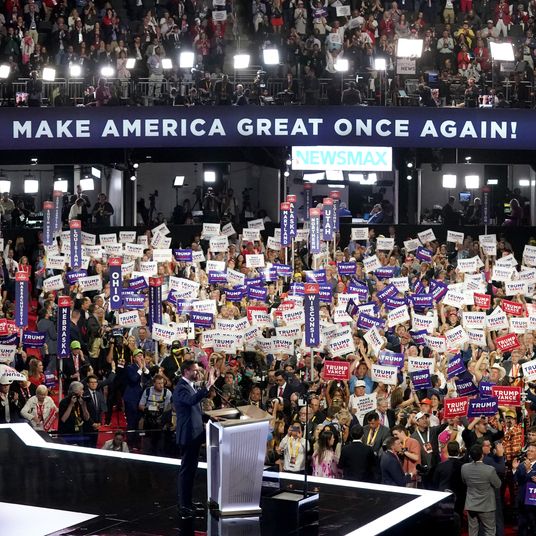
Two years ago, the Mets unveiled a ten-foot-tall statue of Tom Seaver near the main entrance of Citi Field. It depicted the team icon in a classic Seaver pose: mid-pitch, with his back knee so low to the ground it’s about to scrape the dirt. The statue was a hit with fans, who had been clamoring for a permanent tribute to the greatest of Mets pitchers, and the ceremony was a rare feel-good moment for the benighted franchise and its newish owner.
But not everyone was entirely satisfied. A few weeks later, acting on a reader tip, journalist Paul Lukas published a story pointing out a tiny flaw on the statue: The “4” on Bronze Tom Seaver’s jersey did not include a stub extending off the right side of the numeral, as it does in Block Standard, the only font the Mets have ever used on their pinstriped home uniform. The mistake, as minute as it was, played into the narrative of Mets haplessness, and the story got some traction in the mainstream press. It culminated with Chris Christie opining that Lukas should “get a life” during an appearance on WFAN.
For anyone not familiar with Lukas and his life’s work, this might have seemed like an exercise in extreme nitpickery. But for readers of his Uni Watch column, which debuted in 1999 and will publish its final edition on Sunday, it was a valedictory achievement. Among this obsessive crowd, the story of a missing stub on a statue’s numeral qualified as a major scoop.
In launching his column, Lukas all but invented a new beat in sports journalism, one focused entirely on player uniforms, logos, and other related bits of design — what he calls “athletics aesthetics.” His work through the years has taken many forms: critical assessments of new uniform sets, essays on trends, field trips to uni-notable places, and interviews with equipment managers, Nike designers, and the occasional sports-uniform-adjacent figure. He has launched investigations into which Yankee wore the most pinstripes on his jersey or why Bill Buckner was wearing the wristband of a different cursed franchise when he made his infamous error in the 1986 World Series. Did you know that late Orioles manager Earl Weaver had a pocket for his cigarettes sewn into his jersey? Uni Watch readers do.
“People who discovered Uni Watch, they tended to engage with it a lot, very emphatically,” says Lukas. “I heard over and over again people saying, ‘I’m so glad I encountered your work. I thought I was the only one.’ That’s a nice and gratifying thing to hear, that people feel that sense of community. They think they’re the only weirdo out there, but it turns out there’s a whole bunch of weirdos.”
Before he began the column, Lukas would often find himself commenting on little details of the uniforms he saw on TV, like teammates with sleeves of different lengths — hardly the bread and butter of televised sports coverage. His girlfriend at the time suggested he could use an outlet for these thoughts. Lukas had written extensively on consumer culture in a zine called Beer Frame and other publications (including New York), and he’d also done some writing for design magazines. He liked the idea of writing about uniforms, but he didn’t want to create a design column about sports; rather, he wanted to write a sports column about design.
Lukas sold the Village Voice on his idea, and his first column ran on May 26, 1999, with a look at that season’s uniform changes in Major League Baseball. When the Voice shut down its quirky sports section in 2003, Uni Watch moved briefly to Slate before finding a home at ESPN in 2004, where it grew to prominence as part of the off-kilter “Page 2” section, which made Bill Simmons a star and published Hunter S. Thompson in his final years. In 2006, Lukas founded his own website to supplement his ESPN columns; he’d take his writing there full-time after being laid off in 2019 by both ESPN and Sports Illustrated. In recent years, his uniform-writing empire grew to include a subscription newsletter.
The more Lukas wrote, the clearer it became that there was an audience for the rather niche content he was putting out. Sports fans could always read about how their teams played, but the ones who also cared about how they looked had nowhere to go until Uni Watch came along.
Jerry Seinfeld famously joked that sports fans are ultimately just rooting for laundry. He meant it as commentary on how athletes are perpetually switching teams, but a lot of people genuinely do care about the laundry itself. A uniform can be a through-line bridging generations of players. It can set the tone for a franchise, whether it’s looking to convey tradition, or fun, or minimalistic cool. (A bad design, meanwhile, can be a point of shame for a team’s supporters.) And to design-minded sports fans, uniforms exist at the nexus of their interests.
“I just thought it was stunning that there was actually somebody writing about this with some thought,” says Todd Radom, a designer and author who created the logos for teams like the Washington Nationals and Los Angeles Angels, as well as for special events like Super Bowl XXXVIII. “He was the first to give voice to this interest, the first to give voice to this community. I think he provided the template for a lot of other people who followed.”
Over the years, readers would grow to know Lukas’s likes (stirrups, chain-stitching) and dislikes (uniform ads, the color purple). And the comments section of his website would serve as a forum for like-minded obsessives who grew up doodling logos in their notebooks during class and never stopped paying attention to the minutiae of sports design. In Uni Watch parlance, these are the people who “Get It.” Through the years, Lukas has issued more than 3,400 membership cards to readers who’ve shelled out a few bucks for a card designed like their favorite’s team’s jersey. (Full disclosure: I’m one of them.)
With Lukas having proved there’s a market for such commentary, others joined him on the beat. SportsLogos.net, formerly a repository of, well, sports logos, has added daily news stories. Icethetics.com provides obsessive coverage of hockey logos and uniforms. And mainstream writers routinely report on uniform news in a sports world chock full of logo changes, alternate jerseys, and flashy reveals. Indeed, Lukas is walking away from the beat during perhaps the most mainstream uniform story of his career: the disastrous rollout of Nike’s new baseball uniforms, with their tiny lettering and their sweaty, mismatched fabrics.
“Seeing a website like ESPN covering regular uniform news was a pretty big deal,” says Chris Creamer, the founder of SportsLogos.net, who briefly co-hosted a podcast with Lukas called Unified. “You go back and you read old newspaper articles, and a team would release a new uniform and the headline would be, ‘New York Jets Announce Season Ticket Prices, Also Show Off New Uniform.’ It was buried in the story.”
Lukas, 60, isn’t retiring from writing altogether. He still plans to cover food, travel, and minutiae-centric topics on Substack, and he’ll also maintain ownership of the Uni Watch website, which will now be managed by Phil Hecken, the current deputy editor.
Before he shifts into his post-uniform life, the Brooklyn-based Lukas has been traveling the country to celebrate his run with readers, with parties in Baltimore, Minneapolis, Los Angeles, and New Orleans, all leading up to a bash on Sunday at New York’s Bowery Electric. The hockey-themed band the Zambonis will play that farewell event — in custom Uni Watch jerseys, of course.
“What I always say about Uni Watch is that not everybody cares about this stuff, but the people who do care about it really fucking care about it,” says Lukas. “And so I am blessed. I’m lucky to have such an engaged and passionate audience.”




























